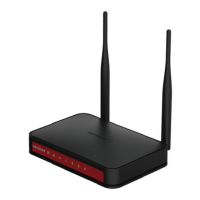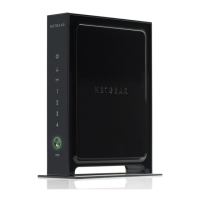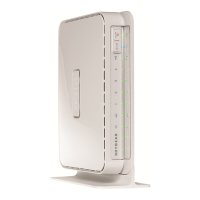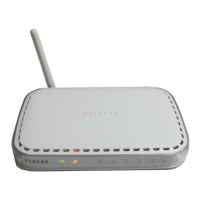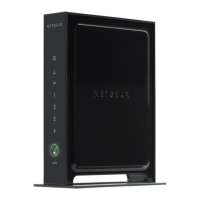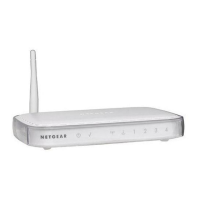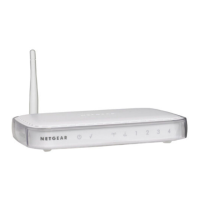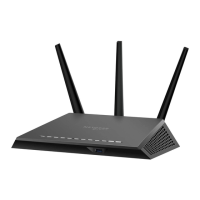Advanced Settings
68
JWNR2010v5 N300 Wireless Router
A screen similar to the following displays:
3. Select the Turn UPnP On check box.
This check box is selected by default. You can enable or disable UPnP for automatic
device configuration. If the T
urn UPnP On check box is cleared, the router does not allow
any device to automatically control the resources, such as port forwarding (mapping), of
the router.
4. In the Advertisement Period (in minutes) field, type the advertisement period in minutes.
The advertisement period specifies how often the router broadcasts its UPnP information.
This value can range from 1 to 1440 minutes.
The default period is 30 minutes. Shorter
durations ensure that control points have current device status at the expense of more
network traffic. Longer durations can compromise the freshness of the device status, but
can significantly reduce network traffic.
5. In the Advertisement T
ime to Live (in hops) field type the advertisement time to live in
hops.
The time to live for the advertisement is measured in hops (steps) for each UPnP packet
sent. Hops are the steps a packet takes between routers.
The number of hops can range
from 1 to 255. The default value for the advertisement time to live is 4 hops, which should
be fine for most home networks. If you notice that some devices are not being updated or
reached correctly, it might be necessary to increase this value.
6. Click the Apply button.
The UPnP Portmap Table displays the IP address of each UPnP device that is accessing
the router and which ports (internal and external) that device has opened.
The UPnP
Portmap Table also displays what type of port is open and whether that port is still active
for each IP address.
7. T
o refresh the information in the UPnP Portmap Table, click the Refresh button.
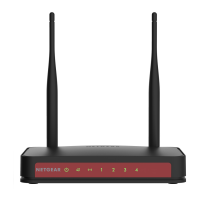
